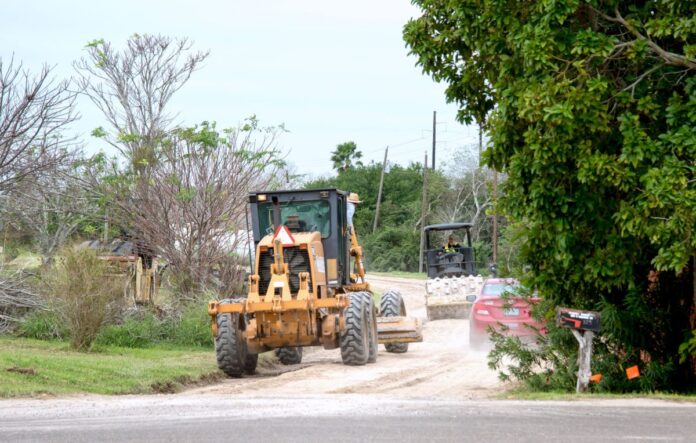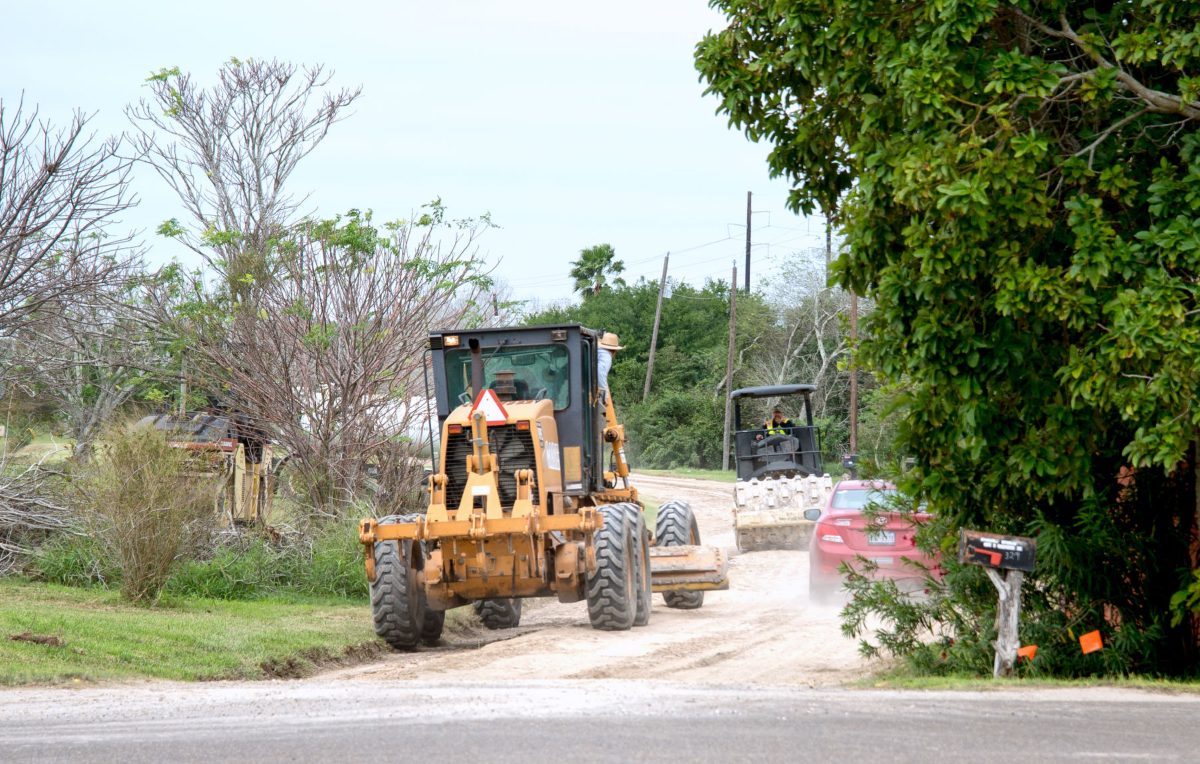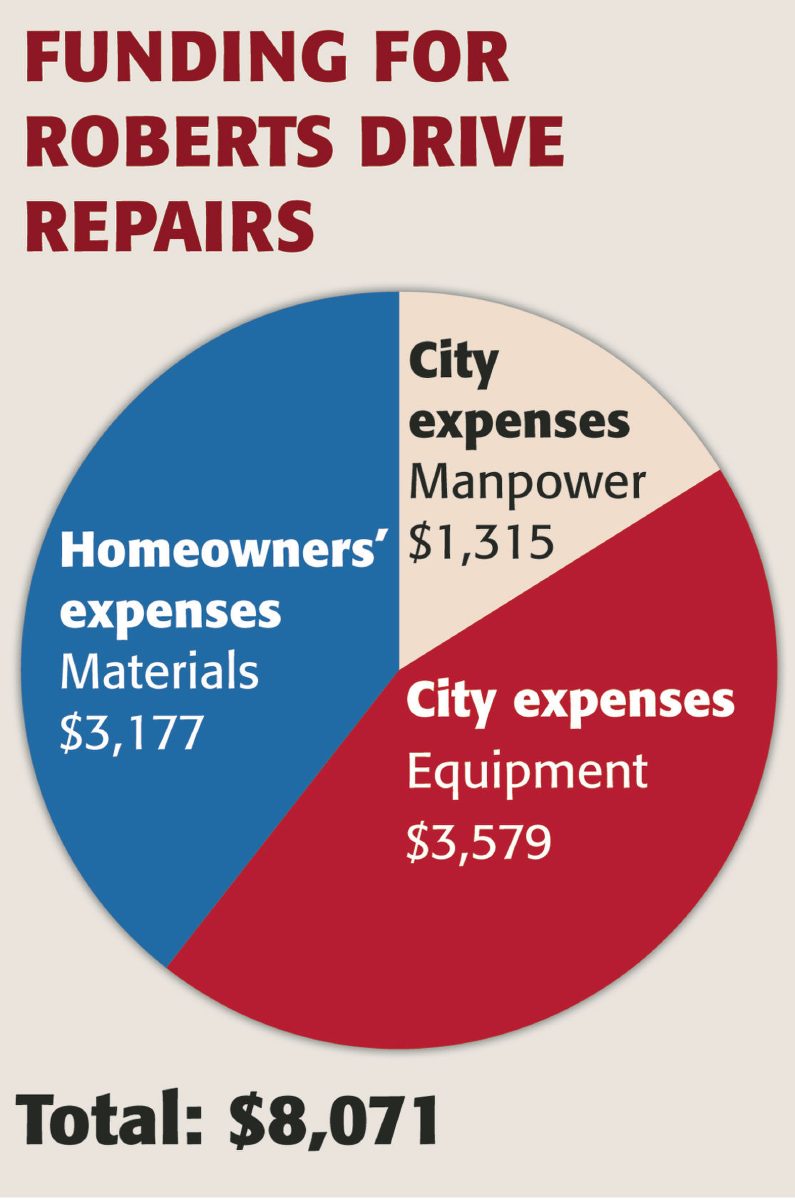SAN BENITO — For about 30 years, residents dodged deep potholes along a dirt track running along the resaca.
Like other property owners there, Tony Rodriguez drove his truck “real slow” along Roberts Drive, a dirt strip in a no-man’s land owned by the San Benito irrigation district.
But the stretch is their sole access to Sam Houston Boulevard and the outside world.
“The big old potholes seemed about four feet deep,” Rodriguez said. “When it rained, it was worse. But it’s the only way in and out.”
Then last month, about eight homeowners asked the city to help fix the road, raising money for part of the job.
This week, road conditions finally changed after city crews graded and poured caliche along the 1,000-foot stretch that’s about 14-feet wide.
City Manager Manuel De La Rosa said he agreed to the work because the city failed to provide the Roberts Drive area with an access road decades earlier.
But City Commissioner Esteban Rodriguez questions “the legality” of the project.
De La Rosa used taxpayer money to fix a road that doesn’t belong to the city, the commissioner said.
A long history surrounds the Roberts Drive area.
The land on which Roberts Drive is located really belongs to the San Benito irrigation district, said Sonia Lambert, the district’s general manager.
But Roberts Drive “is not a road,” Lambert said.
Instead, it’s a “temporary easement.”
About 30 years ago, Lambert said, the district granted a property owner’s request for the easement that ran along the resaca.
As years went by, more homes were built in the area.
And as more homeowners drove across Roberts Drive, the potholes grew deeper, Tony Rodriguez said.
Soon, he said, ambulances couldn’t adequately respond to medical emergencies.
If the city helped fix the road, the neighbors would buy the materials for the job, Rodriguez told De La Rosa
“Driving in and out on Roberts Drive is very much like driving through an obstacle course,” Tony Rodriguez, a realtor, wrote De La Rosa in a Dec. 7 letter. “It’s not only hard on our vehicles but it’s also a safety hazard because emergency vehicles will have a very difficult time getting to their destination on time.”
De La Rosa agreed to do the work.
“The city created a problem decades ago,” De La Rosa said.
Decades ago, he said, the city approved a subdivision plat providing no public access to the area.
“The people are landlocked. They are taxpayers located in the city limits,” De La Rosa said. “The city did not take adequate measures to make sure they had access.”
To help fund the project, Rodriguez and about seven area homeowners raised $3,579 to buy caliche and hot mix.
From Tuesday to Thursday, city crews worked to grade Roberts Road then poured caliche.
When the job was done, the city had spent $1,315 on manpower and $3,579 on equipment, De La Rosa said.
But Esteban Rodriguez believes De La Rosa misused city workers and machinery to fix the road.
“We have no business doing that road,” Esteban Rodriguez said. “Why should we do a street that doesn’t belong to the city? We cannot use city material, personnel and machines.”
Esteban Rodriguez also argued De La Rosa postponed other street projects to fix the road, although it was never placed on the city’s priority list.
“We have a priority list on streets we’re going to pave. We stopped working on the roads,” he said. “There are a lot of residents who pay taxes and wait patiently for their streets to be paved. They got passed over.”
But De La Rosa said he did not delay prioritized street projects to work on Roberts Drive.
Weather conditions did not allow crews to use asphalt needed for other projects, he said.
Esteban Rodriguez said he wants to discuss the matter with commissioners.
“We have to find out the legality,” he said. “If he did wrong, we need to discuss that with the commission.”
But De La Rosa said he had the authority to order work on Roberts Drive because it’s taxpayers’ lone access in the area.






